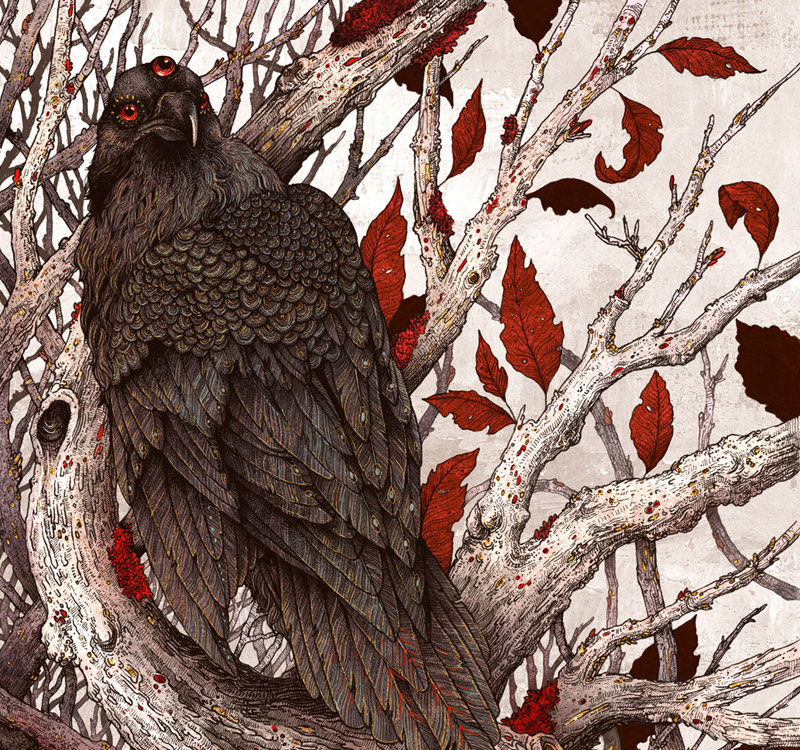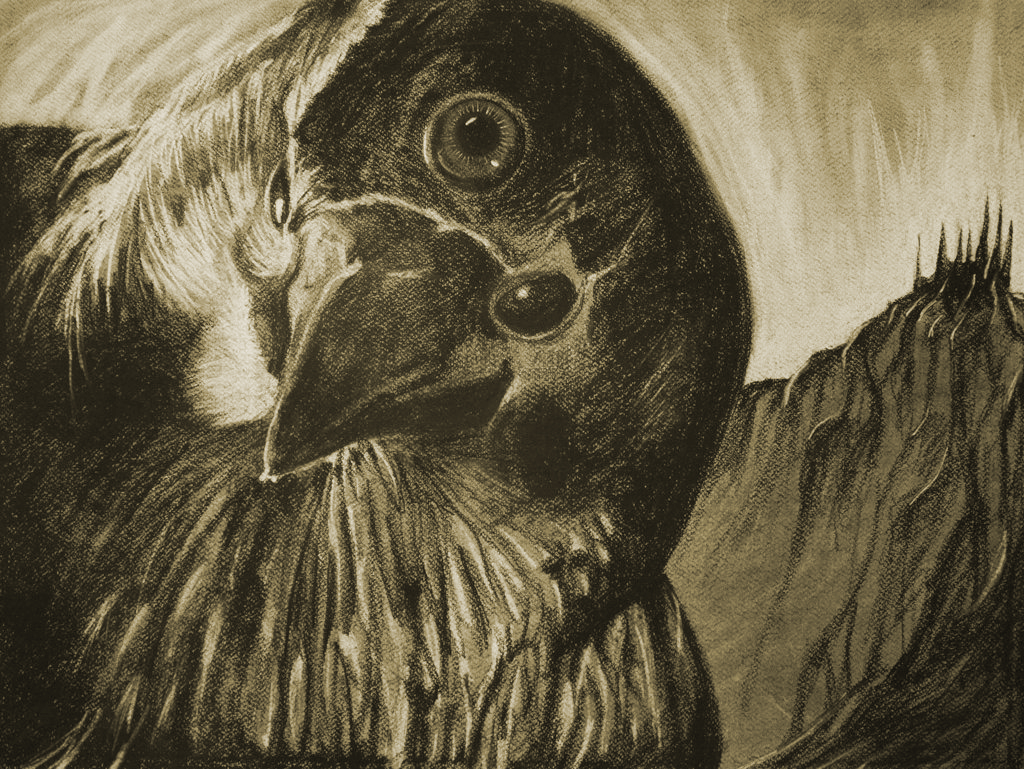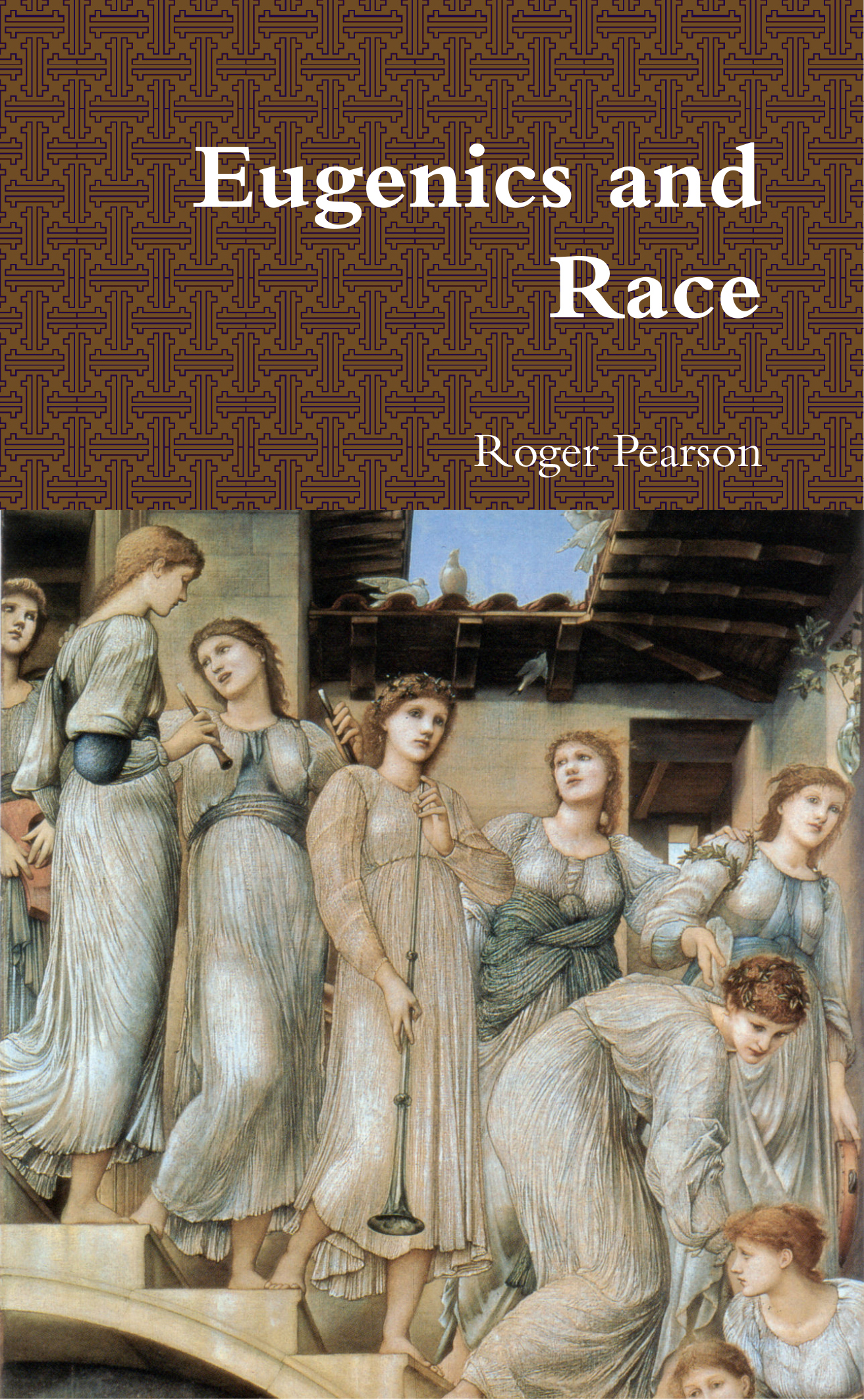and Romans?
The evidence is clear—but often ignored
by John Harrison Sims
Recent [1] films about ancient Greece such as Troy, Helen of Troy, and 300, have used actors who are of Anglo-Saxon or Celtic ancestry (e.g. Brad Pitt, Gerard Butler). Recent films about ancient Rome, such as Gladiator and HBO’s series Rome, have done the same (e.g. Russell Crowe). Were the directors right, from an historical point of view? Were the ancient Greeks and Romans of North European stock?
Most classical historians today are silent on the subject. For example, Paul Cartledge, a professor of Greek culture at Cambridge, writes about his specialty, Sparta, for educated but non-academic readers, yet nowhere that I can find does he discuss the racial origins of the Spartans. Some years ago I asked several classics professors about the race of the ancient Greeks only to be met with shrugs that suggested that no one knew, and that it was not something worth looking into. Today, an interest in the race of the ancients seems to be taken as an unhealthy sign, and any evidence of their Nordic origins discounted for fear it might give rise to dangerous sentiments.
A hundred years ago, however, Europeans took it for granted that many Greeks and Romans were the same race as themselves. The famed 11th edition of the Encyclopedia Brittanica, published in 1911, noted that “survival of fair hair and complexion and light eyes among the upper classes in Thebes and some other localities shows that the blond type of mankind which is characteristic of north-western Europe had already penetrated into Greek lands before classical times.” It added that the early Greeks, or Hellenes, were Nordic, one of “the fair-haired tribes of upper Europe known to the ancients as Keltoi.” Sixty years ago even Bertrand Russell, the British philosopher and socialist, believed that the Hellenes “were fair-haired invaders from the North, who brought the Greek language with them” (History of Western Philosophy, 1946).
Scholars today recoil at this pre-1960s consensus. The Penguin Historical Atlas of Ancient Greece, written in 1996, scoffs at the “undoubtedly dubious racial theories underlying much of this reconstruction,” but offers no theory to replace it, conceding only that “the origin of the Greeks remains a much-debated subject.” The Penguin author makes this startling admission, however: “Many of the ideas of racial origins were developed in the 19th century and, although they may have had some foundation in historical tradition, archaeology or linguistics, they were often combined with more dubious presumptions.” The author fails to list these dubious presumptions. Beth Cohen [editor’s note: a jew], author of Not the Classical Ideal: Athens and the Construction of the Other in Greek Art (2000), asserts that the Thracians, distant cousins of the Greeks, had “the same dark hair and the same facial features as the Ancient Greeks.”
In fact, there was a good basis for the 1911 Britannica to write about blonds in Thebes. Thebes was the leading city of Boeotia, a rich agricultural region in south-central Greece. Fragments from an ancient 150 BC travelogue describe the women of Thebes as “the tallest, prettiest, and most graceful in all of Hellas. Their yellow hair is tied up in a knot on the top of their head.” Pindar, a fifth century Theban lyric poet, refers to the Greeks as “the fair-haired Danaoi,” using a poetical name for the Hellenes. Likewise, in his Partheneia, or “Maiden Songs,” the seventh century BC Spartan poet Alcman, praised the beauty of Spartan female athletes, with their “golden hair” and “violet eyes.” He also wrote of Spartan women with “silver eyes,” meaning light gray. The seventh-century BC Greek poet Archilochus praises the “yellow hair” of one of his lovers, and Sappho—also of the seventh century BC—writes of her “beautiful daughter, golden like a flower.”
As late as the fourth century AD, Adamantius, an Alexandrian physician and scientist, wrote in his Physiognominica, that “of all the nations the Greeks have the fairest eyes,” adding, that “wherever the Hellenic and Ionic race has been kept pure, we see tall men of fairly broad and straight build,… of fairly light skin, and blond.” Several centuries of mixing had presumably changed the racial character of many Greeks, but blonds still survived, and Xanthos, which means “yellow” in Greek, was a common personal name.
Professor Nell Painter of Princeton [editor’s note: a negress], author of The History of White People (see “Whiting Out White People,” AR, July 2010), complains that “not a few Westerners have attempted to racialize antiquity, making ancient history into white race history.” She points out that the Greeks often painted their marble statues—“the originals were often dark in color”—that the paint wore off over time, and Europeans mistakenly concluded from the white marble that the Greeks were white.
Yes, the Greeks painted their statues, but the originals were not dark. Praxiteles’ Aphrodite, from the Greek city of Knidos, was the most famous and most copied statue in the ancient world. Hundreds of copies survive. Experts have determined from microscopic paint particles that Aphrodite was painted blonde. The Romans had their own name for this goddess, Venus, and likewise her “cult images” were ubiquitous and “painted with pale-coloured flesh and golden-blonde hair” (see Joanna Pitman’s On Blondes, 2003).
Phidias’ masterwork, the Athena Parthenos, stood in the Parthenon for nearly 1,000 years until it was lost, probably in the 5th century AD. When American sculptor Alan LeQuire set out to make a faithful copy for the full-scale Parthenon replica in Nashville’s Centennial Park he modeled it on descriptions of the original work. The 42-foot-tall Athena, unveiled in 1990, has light skin, blue eyes, and golden hair [editor’s note: see detail of this image above].
Many small terra-cotta figurines from Greece of the fourth century BC have survived with traces of paint. They show light hair, usually reddish brown, and blue eyes, as do larger statues from the time of the Persian Wars in the early fifth century BC. Even a cursory examination of ancient marble reliefs, statues, and busts reveals European features. Many of the faces could just as easily be those of Celtic chieftains or Viking kings.
There is more evidence of the appearance of the Greeks. Xenophanes, an Ionian Greek philosopher who lived in the fifth century BC, was amused to note that different peoples believed that the gods look like themselves: “Our gods have flat noses and black skins, say the Ethiopians. The Thracians (despite Prof. Cohen’s observations above) say our gods have red hair and hazel eyes.” Indeed, a fourth century BC fresco of a Thracian woman, found in the Ostrusha Mound in central Bulgaria, shows distinctly red hair and European features.
The Greek poet Hesiod (c. 700 BC) called Troy the “land of fair women.” According to the Roman historian Diodorus Sicilus, who lived in the first century BC, the Egyptian god Set had “reddish hair,” a color that was “rare in Egypt, but common among the Hellenes.” Plutarch (46–120 AD) tells us that while the Theban general Pelopidas (d. 364 BC) was campaigning in central Greece, he had a dream in which a ghost urged him to sacrifice a red-haired virgin if he wished to be victorious in the next day’s battle.
Two racial types
There were two racial types in ancient Greece: dark-haired whites and fair-haired whites, as well as gradations in between. The earliest known inhabitants were of the former type. These included the Minoans, who were not Greeks at all, and who built an impressive civilization on the island of Crete. The Pelasgians, which is the name later Greeks gave to the pre-Hellenic population of mainland Greece, were also dark. They tended to have black, curly hair and olive-shaped eyes. Their type is plainly visible on many Attic (Athenian) vases, and has lead some scholars to conclude that all Greeks looked as they did.
Neither the Minoans nor the Pelasgians spoke Greek—the linear A inscriptions of the Minoans have still not been deciphered—so the Greek language must have arrived with the light-haired conquerors who migrated from the north, most likely from the middle Danube River Valley. According to Greek national myth, the Hellenes were descended from Hellen (not to be confused with Helen of Troy), the son of Deucalion. Hellen had sons and grandsons, who correspond to the four main tribal divisions of ancient Greece: the Aeolians Achaeans, Ionians, and Dorians.
Scholars today tend to dismiss such myths but they would not have survived if they had not been generally consistent with the long folk memories of ancient peoples. In this case they point to what classical scholars have long believed was a series of Hellenic descents upon mainland Greece and the Aegean islands. The first Hellenes to arrive were the Ionians and Aeolians; then a few centuries later, the Achaeans, and finally the Dorians.
The early bronze-age Greek civilization (1600-1200 BC) was certainly influenced by Minoan and other eastern Mediterranean cultures, but it was unmistakably Greek. Linear B, which began to dominate Cretan culture around 1500 BC, has been deciphered and found to be an early form of Greek. Around the year 1200 BC this culture, known as Mycenaean, collapsed; its cities were destroyed and abandoned, and Greece entered a 400-year Dark Age. Earthquakes and volcanic eruptions probably played a part in the destruction, and later Greeks attributed it to invasions from the north. Waves of Hellenic warriors swept down and burned the Mycenaean citadels and became the ruling race in Greece. They also sacked the city of Troy, and Homer’s Iliad is about them. They also seem to have snuffed out much of Mycenaean culture: Greeks stopped writing, and abandoned the arts, urban life, and trade with the outside world.
We know something about the early Hellenes from the Iliad. It was first written down in the late eighth century BC, at the end of the Greek Dark Age, after the Phoenicians taught the Greeks how to write again. It recounts events some four to five hundred years earlier. Although we think of the poem as being about the Greeks, Homer’s warrior heroes belong to the Achaean nobility, which suggests that it was the Achaeans who overthrew Mycenaean civilization, not the Dorians, who would descend upon Greece and displace the Achaeans a hundred years later. Archeology confirms this supposition, for Troy was burned around 1200 BC, and the traditional date for the Trojan War is 1184 BC. The Dorian invasion is dated by various ancient historians at 1149, 1100, or 1049 BC.
There is good reason to think that Homer was recording stories handed down during the Dark Age. He was a bard who lived in Ionia, a region on the Aegean coast of what is now Turkey, and if he were making the stories up he would have claimed that the heroes were Ionian. Instead, he sings praises to the light-haired Achaean nobility: Achilles, their greatest warrior, has “red-gold hair,” Odysseus, their greatest strategist, has “chestnut hair,” his wife Penelope has “white cheeks the color of pure snow,” Agamede, a healer and expert on medicinal plants, is “blonde,” and King Menelaus of Sparta, the husband of Helen, has “red hair.” Helen, likewise, has “fair hair,” and even slave girls are light-skinned: “fair-tressed Hecamede,” “fair-cheeked Chryseis,” and “blonde Briseis.” This is significant, for if even some of the slaves were blond it would mean the Nordic type was not unique to the Achaeans, that it was present elsewhere in the Aegean world.
Homer (and Pindar) describe most of the Olympian gods and goddesses as fair haired and “bright eyed,” meaning blue, grey or green. The goddess Demeter has “blond” or “yellow hair,” as does Leto, mother of Apollo, who is also described as “golden haired.” Aphrodite has “pale-gold” hair, and Athena is known as “the fair, bright-eyed one” and the “grey-eyed goddess.” Two of the gods, Poseidon and Hephaestus, are described as having black hair. As noted above, Xenophanes complained that all peoples imagine the gods to look like themselves.
It was the Dorians, the last Greek invaders, who ended Achaean rule and probably provoked a mass migration of Aeolian and Ionian Hellenes—no doubt including Homer’s ancestors—across the Aegean Sea to the coast of Asia Minor. The Dorians who settled in the fertile valley of the Eurotas in the southern Peloponnesus were the direct ancestors of the Spartans of the classical age, and they claimed to be the only pure Dorians.
Werner Jaeger, Director of the Institute of Classical Studies at Harvard, writes:
“The national type of the invader remained purest in Sparta. The Dorian race gave Pindar his ideal of the fair-haired warrior of proud descent, which he used to describe not only the Homeric Menelaus, but the greatest Greek hero, Achilles, and in fact all the ‘fair-haired Danaeans’ [another name for the Achaeans who fought at Troy] of the heroic age” (Paideia: The Ideals of Greek Culture, 1939).
The classical Greeks made no claim to being autochthones, that is to say, “of the earth,” or the original inhabitants of the land. Rather, they took pride in being epeludes, the descendants of later settlers or conquerors. Two notable exceptions were the Arcadians and the Athenians, whose rocky soils presumably offered little temptation to armed colonizers. The historian Herodotus (484-420 BC) recorded that the Athenians were “a Pelasgian people [who] had occupied Attica and never moved from it,” as were the Arcadians. Language lends support to this view, for both the Athenians and Arcadians spoke unique dialects. They learned Greek from the northern invaders but retained Pelasgian elements.
Thus, classical Greece was a fusion, both cultural and racial, of these two types of whites. Some city-states, such as Thebes and Sparta, were predominantly Nordic. Others, such as Athens, were predominantly Mediterranean, and still others were mixtures of the two.
The Roman patricians
Nell Painter [the negress mentioned above], author of the above-mentioned History of White People, finds it “astonishing” that the American Nordicist Madison Grant (1865-1937) argued in The Passing of the Great Race (1916) that the Roman nobility was of Nordic origin, yet there is good evidence for this view. There are many lavishly illustrated books about ancient Rome with examples of death masks, busts, and statues that clearly depict the Roman patricians not simply as Europeans but as northern European.
R. Peterson’s fine study, The Classical World (1985), which includes an analysis of 43 Greek, and 32 Roman figures, is persuasive. Dr. Peterson explains that the Romans painted their death masks to preserve the color, as well as the shape, of their ancestors’ faces.
Blue eyes, fair hair, and light complexions are common. A good example of racial type is the famous portrait bust of Lucius Junius Brutus, the founder of the Roman Republic, which dates from the fourth century BC. Brutus’ face is identifiably Germanic, and so is the color of his eyes. The sculptor used ivory for the whites and blue glass for the pupils.
Or take the famous marble head of a patrician woman from the late first century AD, which is often included in illustrated surveys of imperial Rome to demonstrate the fashion for curled hair. Her features are typically northern European: a delicate, aquiline nose, high cheekbones, and a face angular and long rather than round. Another classic example is the famous fresco from the Villa of the Mysteries in Pompeii, which shows four women undergoing ritual flagellation. They are tall, light-skinned, and brown-haired.
There is also evidence from Roman names. Rutilus means “red, gold, auburn” and stems from the verb rutilo, which means “to shine with a reddish gleam.” Rufus, meaning red, was a common Roman cognomen or nickname used for a personal characteristic, such as red hair. The Flavians were an aristocratic clan whose family name was derived from flavus, meaning golden-yellow. The Flaminians were another noble family whose clan name came from flamma, meaning flame, suggesting red hair.
According to Plutarch, Marcus Porcius Cato had “red hair and grey eyes,” Lucius Cornelius Sulla, the general and dictator, had “blue-grey eyes and blond hair,” and Gaius Octavius (Augustus), the first Roman emperor, had “bright eyes and yellow hair.” Recent analysis of an ancient marble bust of the emperor Caligula found particles of the original pigment trapped in the stone. Experts have restored the colors to show that the demented ruler had ruddy skin and red hair.
The love poetry of Publius Ovidius Naso, better known as Ovid, (43 BC to AD 17) offers much evidence of the color of upper-class Roman women during the early years of the empire. That Ovid ascribes blond hair to many goddesses—Aurora, Minerva, Ceres, Diana, and Venus—tells us something about the Roman ideal of beauty; that he describes many of his lovers the same way tells us that the Nordic type was still found in imperial Rome. “I’m crazy for girls who are fair-haired and pale-complexioned,” he writes in his Amores of 15 BC, but “brunettes make marvelous lovers too.” He admires the contrast of “dark-tresses against a snow-white neck,” and adores young girls who blush. One of his favorite lovers is “tall” with a “peaches-and-cream complexion,” “ivory cheeks,” and “bright eyes.” Another was a “smart Greek blonde.”
So where did the Romans come from? They were a Latin people, although according to legend that may have some basis in fact, there were also Greek colonists and Trojan refugees among the founding races. The Latins were one of eight Nordic Italic tribes—Apulii, Bruttii, Lucanians, Sabines, Samnites, Umbrians/Oscians and the Veneti—who migrated into the Italian peninsula around 1000 BC. Of course, Italy was not vacant. The Etruscans lived to the north of Rome in what is now Tuscany, and there were other darker-complexioned whites living in the peninsula. The Etruscans are likely to have been Carians from Asia Minor.
What became of the Nordic Greeks and Romans? Their numbers were reduced and thinned through war, imperialism, immigration, and slavery. Protracted internecine war was devastating. The Hellenes lost relatively few men in their two wars with the Persian Empire (490, 480-479 BC), but they were decimated by the ruinous series of inter-Hellenic wars that followed. The Peloponnesian War (431-404 BC) pitted Athens and her subject Ionian cities against the Spartan Dorian confederacy. That was followed by 35 years of intermittent warfare between Sparta and Thebes (396-362 BC), which pitted Nordics against Nordics. These wars so weakened the Greek republics that they fell under Macedonian rule about 20 years later (338 BC), bringing to an end the classical age of Greece.
Money was, as always, a racial solvent. Theognis, a noble poet from the Dorian city of Megara wrote in the sixth century BC: “The noblest man will marry the lowest daughter of a base family, if only she brings in money. And a lady will share her bed with a foul rich man, preferring gold to pedigree. Money is all. Good breeds with bad and race is lost.”
The Roman experience was similarly tragic. All of her later historians agreed that the terrible losses inflicted by Hannibal during the Second Punic War (218-201 BC) were minor compared to the horrendous losses Rome inflicted on herself during the nearly 100 years of civil war that followed the murder of the reforming Tribune Tiberius Gracchus in 133 BC.
Immigration was the inevitable backwash of imperialism as slaves, adventurers, and traders swarmed into Rome. Over time, slaves were freed, foreigners gave birth to natives, non-Romans gained citizenship, and legal and social sanctions against intermarriage fell away. By the early empire, all that was left of the original Roman stock were a few patrician families.
The historian Appian lamented that “the city masses are now thoroughly mixed with foreign blood, the freed slave has the same rights as a native-born citizen, and those who are still slaves look no different from their masters.” Scipio Aemilianus (185–129 BC), a statesman and general of the famed clan of the Aemilii, called these heterogeneous subjects “step-children of Rome.”
One hundred and fifty years later, Horace (65–8 BC) wrote in Book III of the Odes:
Our grandfathers sired feeble children; theirs
Were weaker still—ourselves; and now our curse
Must be to breed even more degenerate heirs.
The last Roman writers therefore came to see their own people as both morally and physically degenerate. The subtext of Tacitus’ (56-117 AD) ethnological treatise Germania is a longing for the northern vigor and purity the Romans had lost. He saw the Gauls and Germans as superior to the Romans in morals and physique, and Roman women shared this admiration. Blond hair became the rage, and German and Gaulic slave women were shorn of their blond or reddish-brown hair to make wigs for wealthy women. By the time of Tertullian (160-225 AD), so many Roman women were dying their hair that he complained, “they are even ashamed of their country, sorry that they were not born in Germany or Gaul.” In the early second century AD, the satirist Juvenal complained of the dwindling stock of “the bluest patrician blood,” which is a figurative phrase for the nobility, whose veins appear blue through their light skin.
Viewed in a historical context, it is almost as if today’s northern Europeans have set out perfectly to imitate the ways in which the Greeks and Romans destroyed themselves. In both Europe and America, patriotic young men slaughtered each other in terrible fratricidal wars. In North America, the descendents of slaves are the majority in many great cities. Both continents have paid for imperial ambitions with mass immigration of aliens.
Will we be able to resist the forces that brought down the ancients?
________________
[1] This article was originally published in 2010 by American Renaissance. Mr. Sims is an historian and a native of Kentucky.









